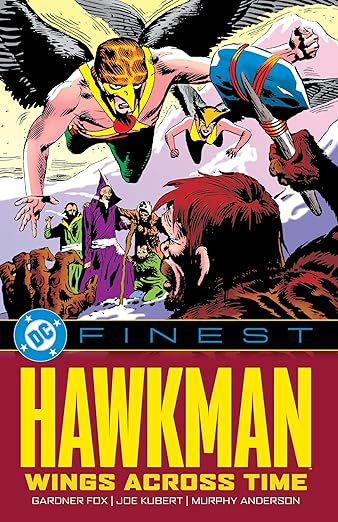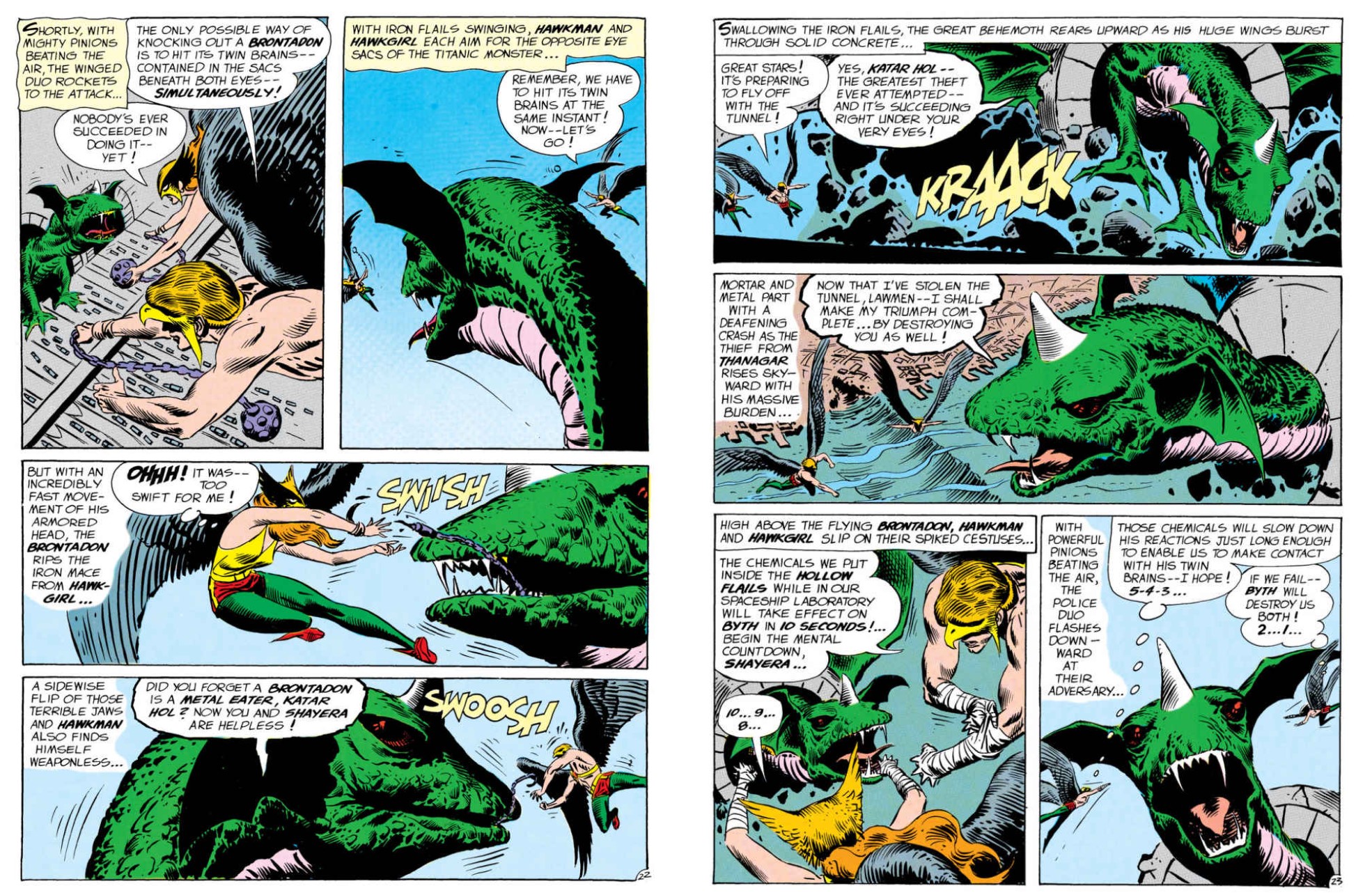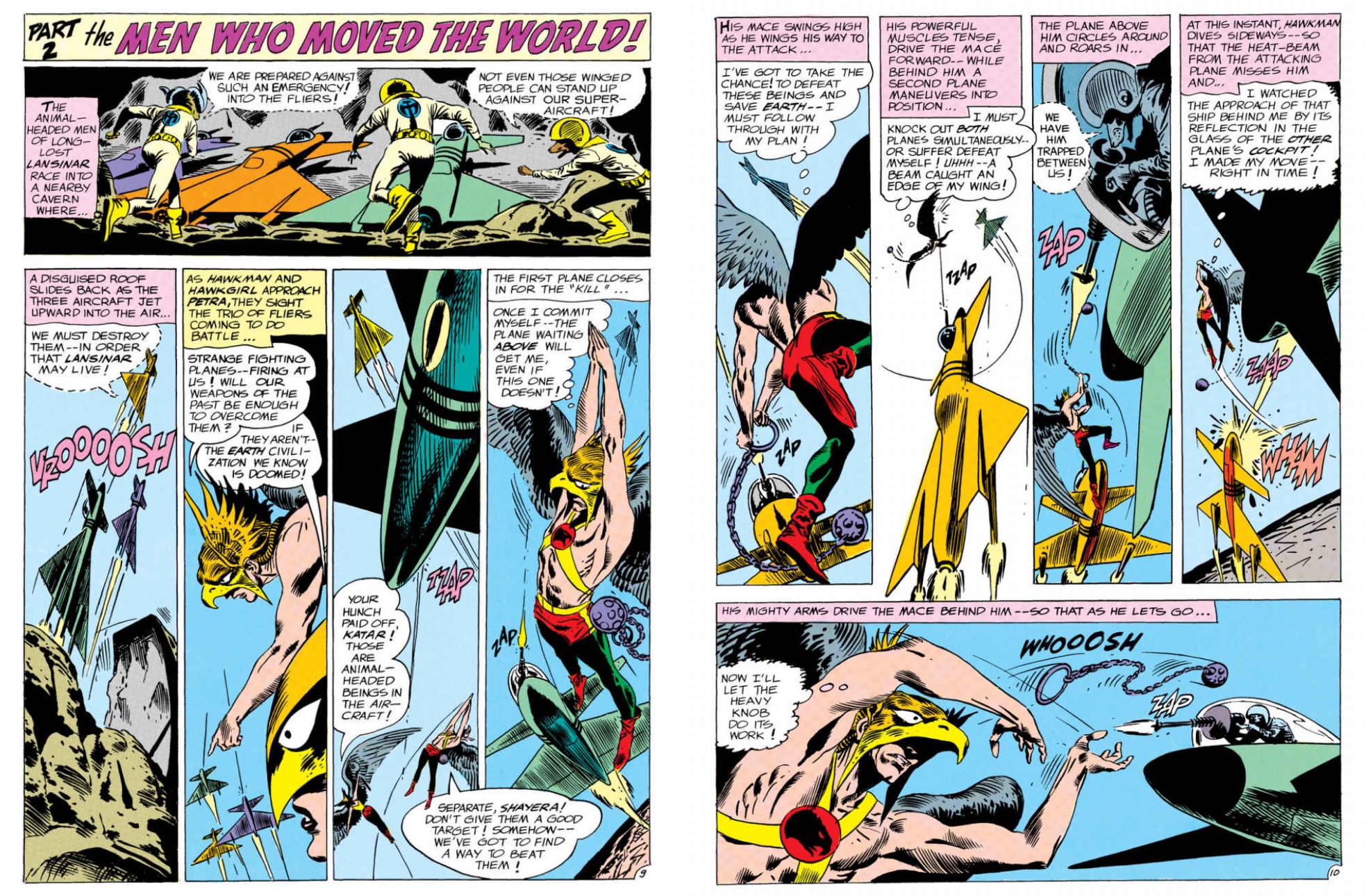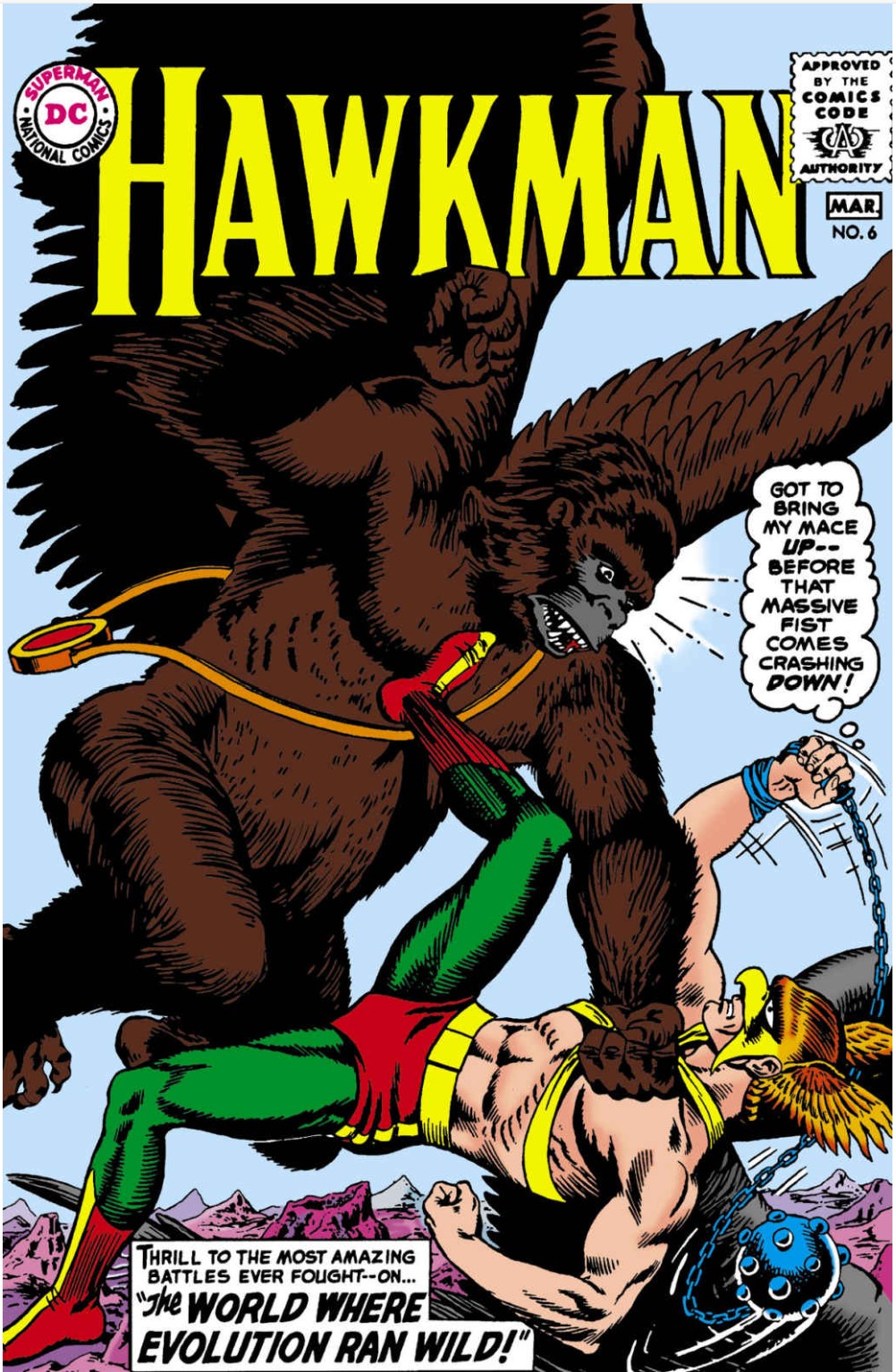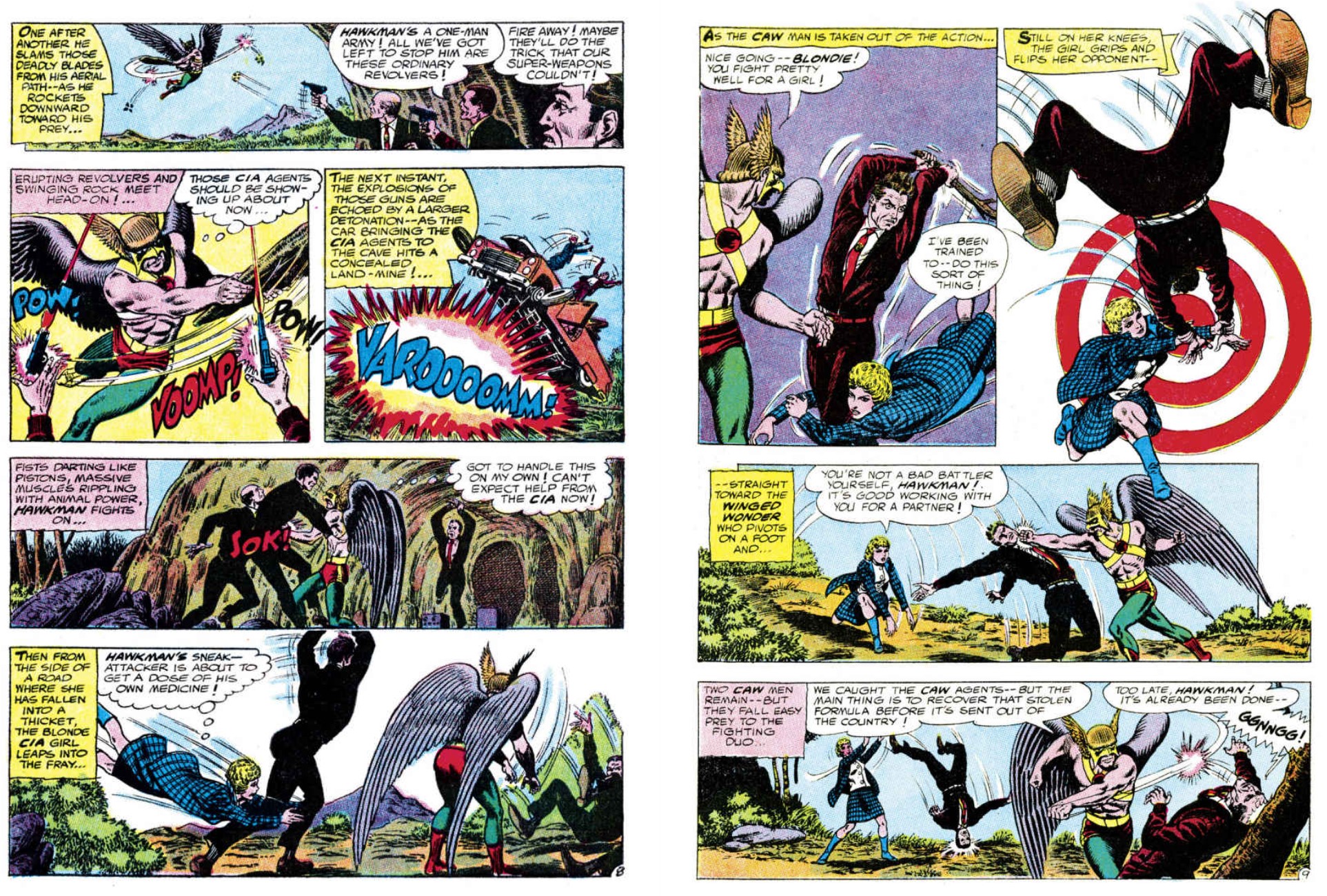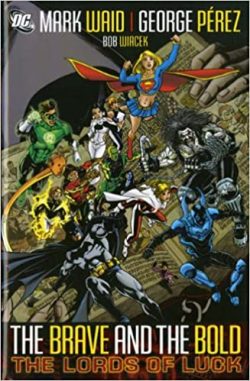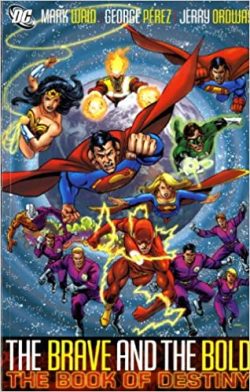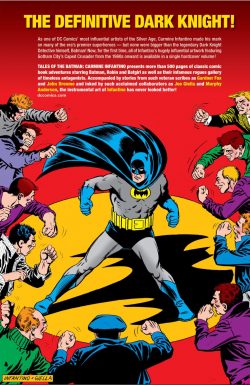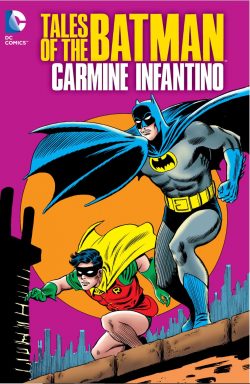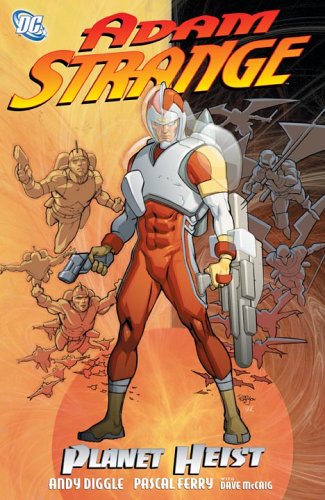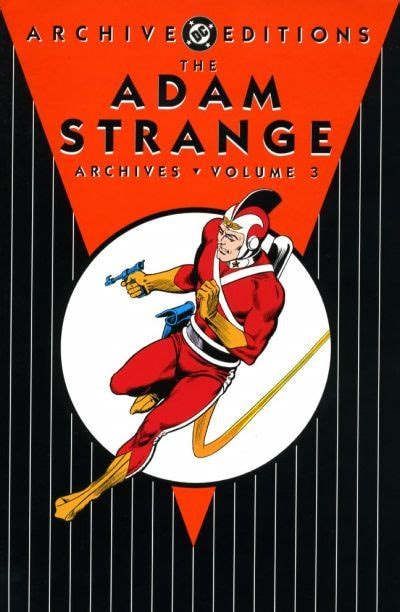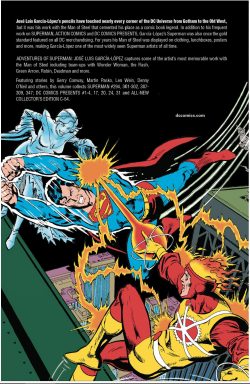
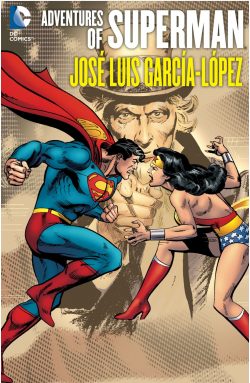
By José Luis García-López, Martin Pasko, Gerry Conway, Elliot S. Maggin, David Michelinie, Len Wein, Denny O’Neil, Bob Oksner, Frank Springer, Vince Colletta, Dan Adkins, Joe Giella, Steve Mitchell, Dick Giordano & various (DC Comics)
ISBN: 978-1-4012-3856-8 (HB/Digital edition)
This book includes Discriminatory Content produced in less enlightened times.
The American comic book industry would be utterly unrecognisable if Superman had never been born. His unprecedented adoption by a desperate and joy-starved generation quite literally gave birth to a genre if not an actual art form. Within three years of his June 1938 debut, the intoxicating blend of eye-popping action and social wish-fulfilment which hallmarked the early Man of Steel had grown to encompass cops-and-robbers crime-busting, socially reforming dramas, science fiction, fantasy, whimsical comedy and, once the war in Europe and the East embroiled America, patriotic relevance.
In many ways Superman is still master of the world, having utterly changed the shape of a fledgling industry and modern entertainment in general. There have been newspaper strips, radio and TV shows, cartoons games, toys, merchandise and blockbusting movies. Everyone on Earth gets a picture in their heads when they hear the name. Moreover, he is a character endlessly revitalised by the creators who work on his never-ending exploits. One the most gifted and intoxicating is José Luis García-López. An industry professional since he was 13 years old, the master illustrator was born in Pontevedra, Spain on 26th March 1948. By age three he was living in Argentina, and reared on a steady diet of comics: especially the works of Alex Raymond, Hal Foster, Alberto Breccia, Milt Caniff and José Luis Salinas.
During the late 1960s, García-López broke into the US comics world, with anthological romance work and anodyne horror tales for Charlton Comics which led to mystery-suspense yarns for Gold Key. In 1974 he moved to New York City where Joe Orlando got him a crucial intro meeting with DC Comics. That turned into a near-exclusive 40-year association which not only generated astounding comics sagas, but also saw the artist become the corporation’s official reference artist: the fount of all style guides and merchandising materials. His art was DC’s interface with the wider world.
After a few tentative inking jobs, García-López debuted as a DC penciller and inker on a Hawkman back-up in Detective Comics #452 in October 1975, and a month later was illustrating post-apocalyptic doomsday thriller Hercules Unbound. His sumptuous art could also encompass grim & gritty and he was drafted in to end the run on the company’s Tarzan title, and was afterwards handed western antihero Jonah Hex when the gunslinger – bucking all industry sales trends – graduated to his own solo title in early 1977.
The artist’s star was on the rise. While filling in all across the DCU – his assorted Superman tales are all in this stunning hardback/digital compilation – García-López was increasingly first choice for major publishing projects and events, such as the Marvel-DC Batman/Hulk tabloid crossover, prestige specials such the Superman/Wonder Woman clash included here and such breakthrough/breakout miniseries and graphic novels as Cinder & Ashe, Atari Force, Twilight, Star Raiders, Road to Perdition and many more. Paradoxically, he remains one of the company’s greatest artists and yet largely unknown and under-appreciated.
This splendid tome gathers the contents of Superman #294, 301-302, 307-309, 347; All-New Collectors’ Edition C-54 and DC Comics Presents #1-4, 17, 20, 24, 31: collectively spanning December 1975 through March 1981. Hopefully by the time I get to the sequel Superman and companion Batman volumes there will also be a DC Universe of… edition…
What we have here, though, is a boldly exuberant celebration of the Man of Steel, many with guest stars and all splendidly accessible to veteran fans and casual acquaintances alike.
The wonderment opens with a short back-up from Superman #294. Scripted by Martin Pasko and inked by Vince Colletta, ‘The Tattoo Switcheroo!’ details how Clark Kent escapes secret identity exposure after being nabbed by gangsters. Such pedestrian concerns are forgotten in Superman #301 (July 76) where Gerry Conway & Bob Oksner help prove ‘Solomon Grundy Wins on a Monday!’, as Earth-2’s monstrous zombie horror sideslips to Earth-1 to wreak havoc in Metropolis, thereby forcing the Action Ace to use brains rather than brawn to win the day.
An issue later, Elliot S. Maggin scripted ‘Seven-Foot-Two… and Still Growing!’ as fiendish scientist Lex Luthor finds a way to diminish the hero’s intellect by enlarging him to the point where his brain no longer efficiently connects to his dinosaur-dimensioned body. Thankfully, size-shifting hero The Atom is only a phone call away…
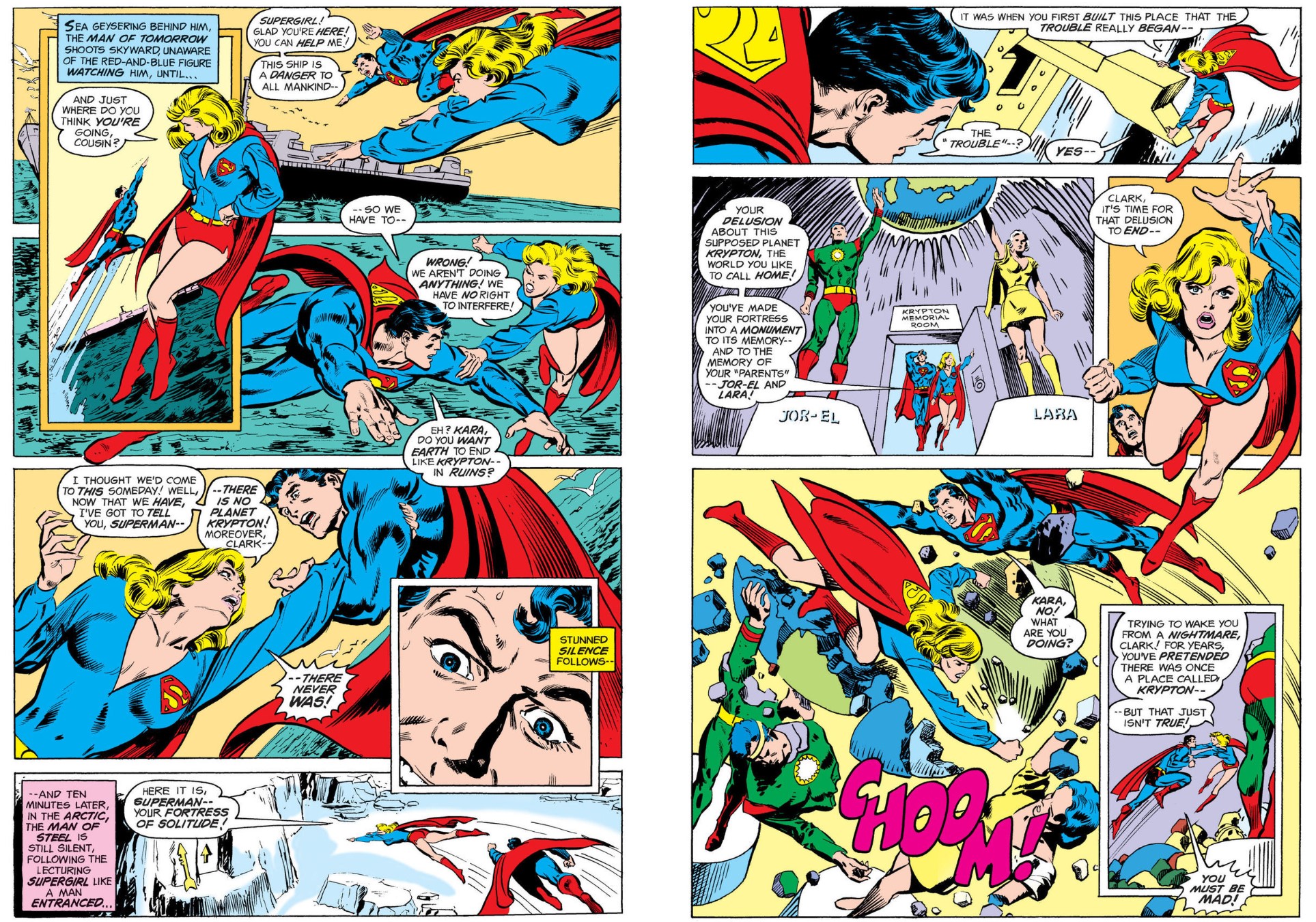
Curt Swan was Superman’s premiere artist for decades: a supremely gifted and conscientious illustrator who made the character his own. He was not, however, superhuman and while he was drawing what was then billed as “the longest Superman story ever” for DC Special Series #5 (Superman Spectacular 1977) García-López united with Conway and inker Frank Springer for issues #307-309 (January – March 1977), wherein the Man of Steel was deceived and deluded into believing his alien origins to be a comfortable fabrication to ease a human mutant’s twisted mind. In ‘Krypton – No More!’ Kal-El waged a war to save the environment from big business and their multipowered minions Radion & Protector, even battling his cousin Supergirl to disprove ‘This Planet is Mine!’ before the true story is revealed, just in time to tackle an alien invasion in ‘Blind Hero’s Bluff!’ as the Girl of Steel joined the now clear-headed hero and his faithful dog Krypto…
Following that is one of the most impressive and fun comics sagas of the era. Written by Conway and inked by Dan Adkins, All-New Collectors’ Edition C-54 (January 1978) sees ‘Superman vs. Wonder Woman’ take us back to World War II, as Man of Steel and Amazing Amazon meet for the first time after Nazi Übermensch Baron Blitzkrieg and Japan’s infallible assassin Sumo the Samurai unite to steal a prototype atomic device. Although they should be allies, the heroes are quickly and cataclysmically at odds over the dispensation of the nuke so, once they stop fighting, they still must defeat the Axis Powers’ most fanatical operatives…
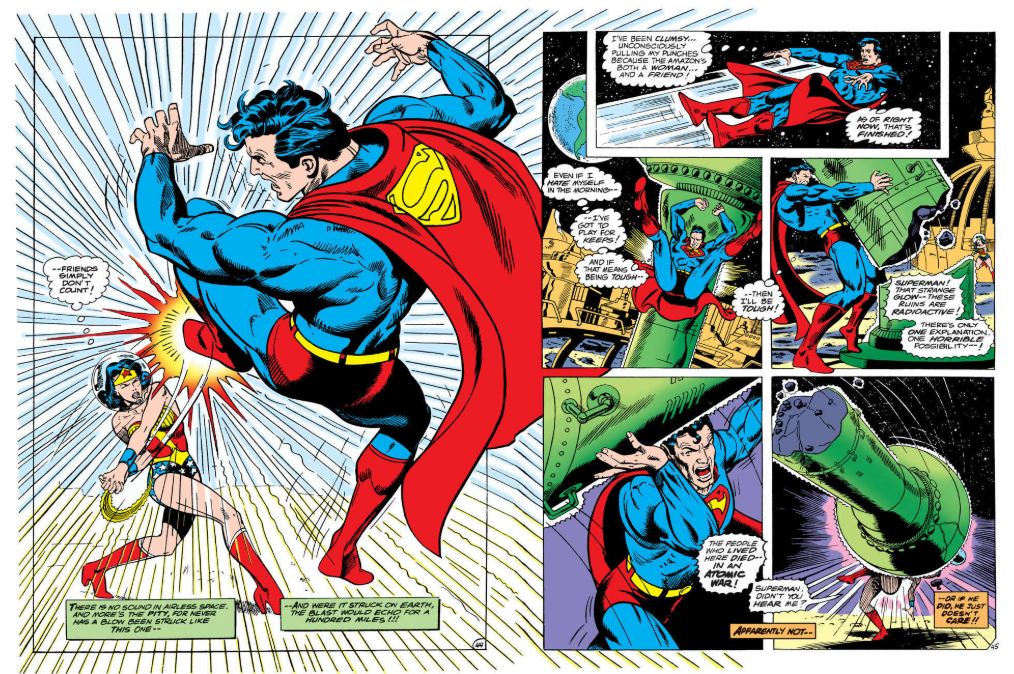
From the moment a kid first sees his second superhero the only thing they want is to see how the new gaudy gladiator stacks up against the first. From the earliest days of comic books (and according to DC Comics Presents editor Julie Schwartz it was the same with the pulps and dime novels that preceded it), we’ve wanted our idols to meet, associate, battle together – and if you follow the Timely/Marvel model, that means against each other – far more than we want to see them trounce archenemies in a united front…
The concept of team-up books – an established star pairing or battling (usually both) with less well-selling company characters – was far from new when DC awarded their then-biggest gun a regular arena to have adventures with other stars of their firmament, just as Batman had been doing since the middle of the 1960s in The Brave and the Bold. It was the publicity-drenched weeks before release of Superman: The Movie and Tim Burton’s Batman (which, BTW, García-López also provided designs for) was over a decade away…
The Metropolis Marvel had already enjoyed the serial sharing experience, when World’s Finest Comics briefly ejected the Caped Crusader and Superman battled beside a coterie of heroes including Flash, Robin, Teen Titans, Vigilante, Dr. Fate and others (issues #198-214: November 1970 to October/November 1972) before a proper status quo was re-established.
Star-studded new monthly DC Comics Presents was a big deal at the time, so only the utterly astounding and series-unattached José Luis García-López (inked by Adkins) could conceivably open the show. Silver Age Flash Barry Allen had been Superman’s first co-star in that aforementioned World’s Finest Comics run and he reprised his role in ‘Chase to the End of Time!’ and ‘Race to the End of Time!’ (DCCP #1 & 2: July/August & September/October 1978), with scripter Marty Pasko detailing how warring alien races trick both heroes into speeding relentlessly through the timestream to prevent Earth’s history being erased. As if that isn’t dangerous enough, nobody could predict the deadly intervention of the Scarlet Speedster’s most dangerous foe, Professor Zoom, the Reverse-Flash, who tries to turn the race against time to his own advantage.
David Michelinie wrote a tantalising pastiche of classic Adam Strange/Mystery in Space thrillers for García-López to draw and ink in ‘The Riddle of Little Earth Lost’, wherein the Man of Two Worlds and Man of Tomorrow foil the diabolical cosmic catastrophe scheme of deranged military genius Kaskor who intended to transpose and subjugate or destroy Earth and light-years-distant planet Rann.
Len Wein wrote the superb ‘Sun-Stroke!’ as the Man of Steel and madly-malleable Metal Men joined forces to thwart solar-fuelled genius I.Q. and toxic elemental menace Chemo after an ill-considered plan to enhance Earth’s solar radiation exposure provoked cataclysmic solar flares. With the title on solid ground the artist moved on, but returned with Gerry Conway and inker Steve Mitchell to herald the return of Firestorm in DCCP #17’s ‘The Ice Slaves of Killer Frost!’: a bombastic, saves-the-day epic returning the Nuclear Man to active DC pantheon service after a long hiatus.
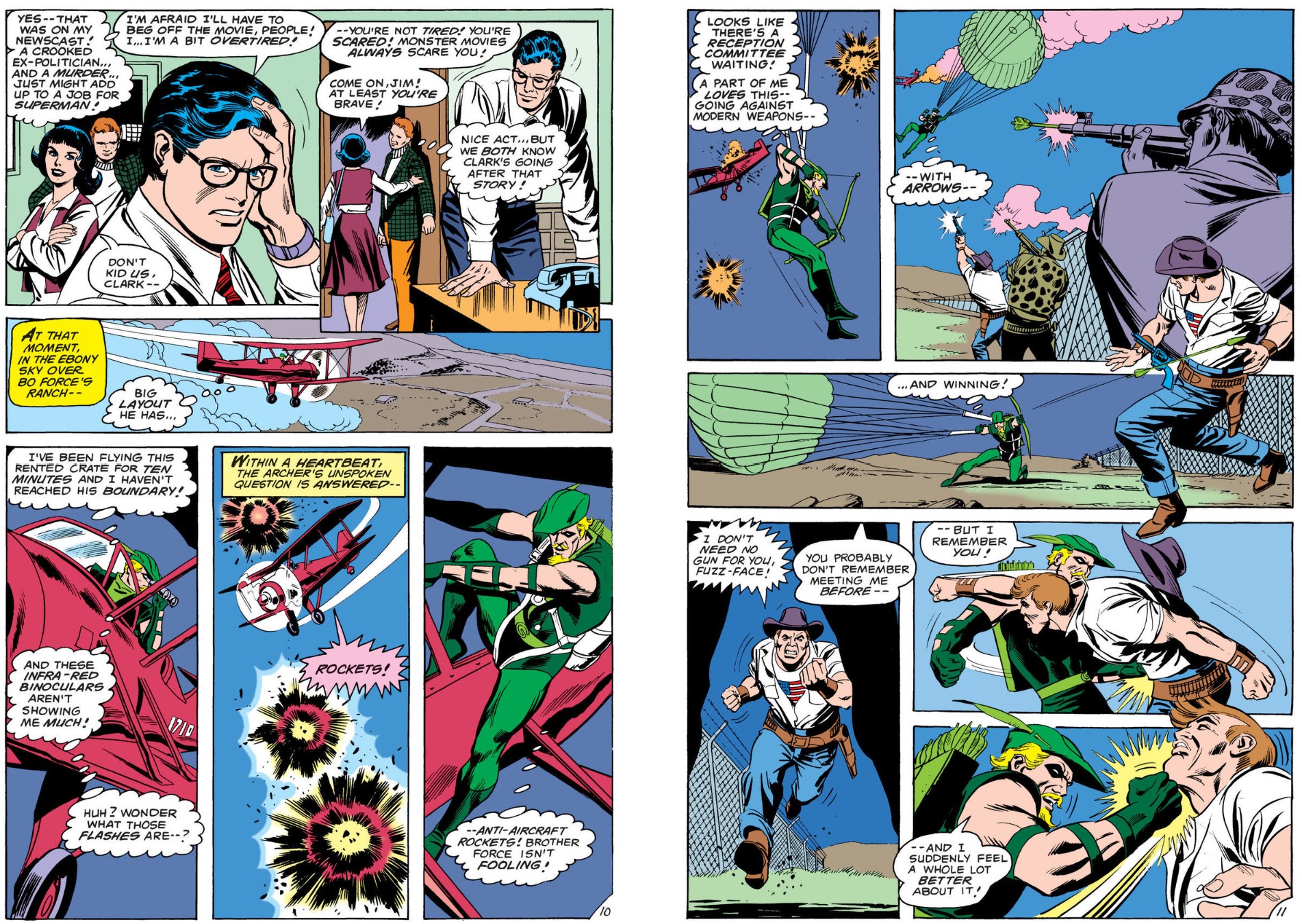
In DCCP #20, Green Arrow steals the show in gripping, Big Business-busting eco-thriller ‘Inferno from the Sky!’ (Denny O’Neil, García-López & Joe Giella), after which the artist filled in with Conway on Superman #347 (May 1980) as the Last Son of Krypton clashes with a mythic cosmic courier in ‘The Sleeper Out of Time!’
In his peregrinations around the DCU, García-López had particularly distinguished himself with numerous episodes and fill-ins starring murdered aerialist Deadman. One of the very best came in DC Comics Presents #24 (August 1980) wherein scripter Wein reveals the tragic, chilling story of ‘The Man Who Was the World!’ as the grim ghost is forced to possess Superman and save the Earth… but fouls up badly…
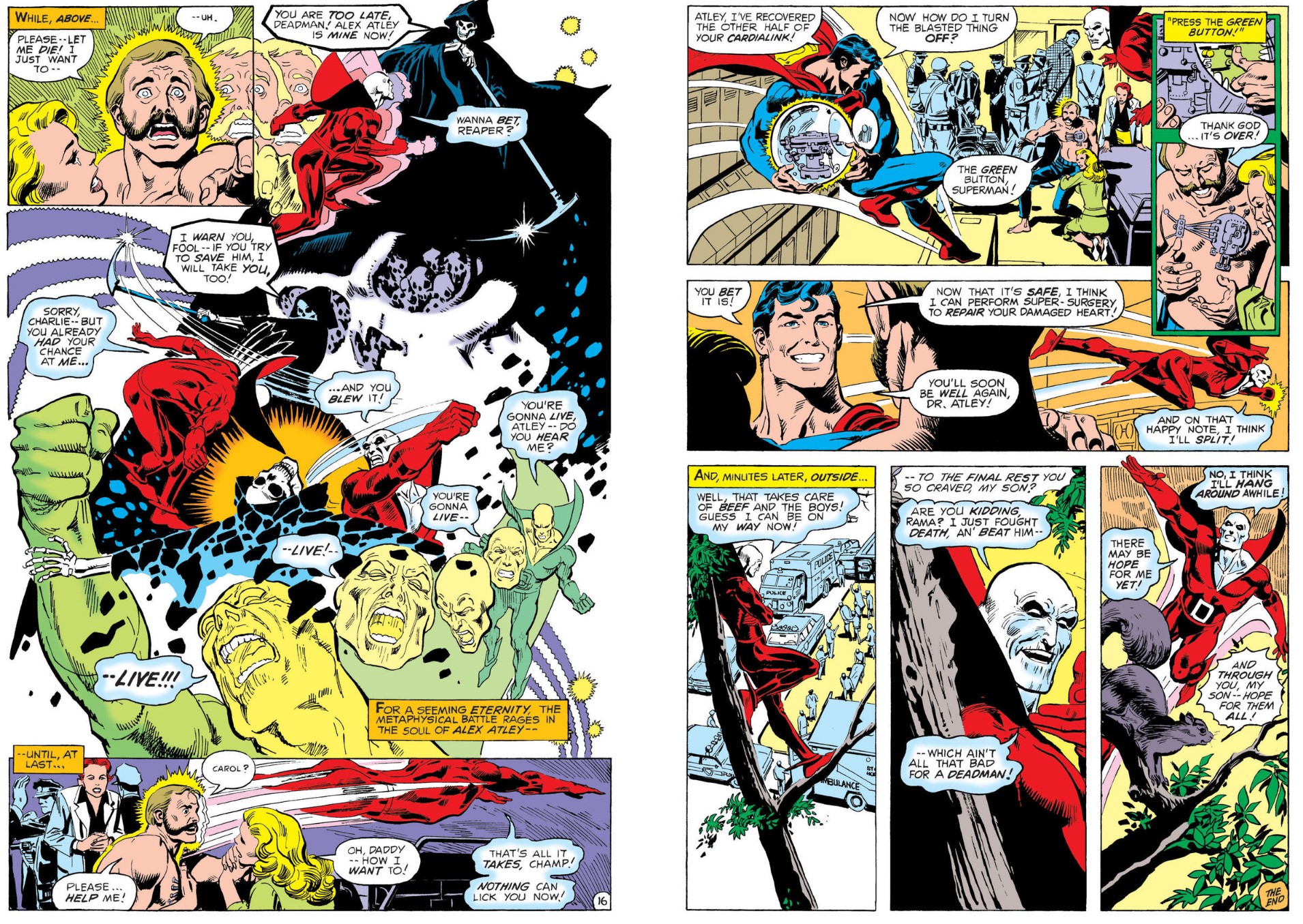
Wrapping up this superb Fights ‘n’ Tights festival is ‘The Deadliest Show on Earth!’ (DCCP #31); written by Conway and inked by Dick Giordano, teaming Man of Steel and original Robin, the Teen Wonder Dick Grayson to conclusively crush a perfidious psychic vampire predating on the performers at the troubled Sterling Circus…
These tales are gripping fare elevated to epic heights by the magnificent art of one of the world’s finest artists. How could any fan possibly resist?
© 1975, 1976, 1977, 1978, 1979, 1980, 1981, 2013 DC Comics. All Rights Reserved.

